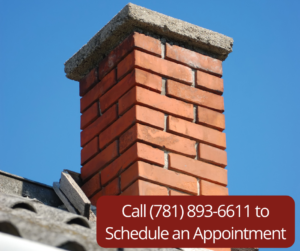Chimney Inspections & Spring: Made for Each Other!
Spring is, allergies aside, the greatest season. At least, that’s what Southern Chimneys thinks. What better time to be up on a roof and outdoors than on sunny, blue-sky days that are the perfect temperature?
If you want to take advantage of our favorite season and have your chimney serviced or inspected, now is the time! Don’t wait, as our schedules fill up fast this time of year.
Your chimney was working its hardest over the last few months. Now is the perfect time to see what –if any– damage all the cold weather and rain did to things over the winter. A springtime chimney inspection and a possible chimney sweep can prevent disasters that will affect your home all the way into next winter. Take advantage of your desire for spring cleaning and boost your chimney and fireplace performance by getting yours inspected now!
Five reasons spring’s the right time for a chimney inspection!
- Keep your home smelling fresh.Ever heard of creosote? It’s the buildup that comes from wood fires and turns into dark, cruddy deposits in your chimney. Creosote sitting there in your chimney and, as the weather warms up, it’s going to create a terrible odor that will spread all throughout your house.
- Make sure your home’s safe……from critters. Chimneys are also common entry points for a variety of unwanted pests, ranging from squirrels to birds. A properly installed and inspected chimney cap, pan, or shroud will prevent these pesky critters from entering your property and causing problems.
- Don’t let the water in.All of that rainy weather can cause water damage from the buildup of moisture in your chimney. In fact, with the record rainfall we’ve had recently, water might already be puddling up in there. Your chimney can collect debris and water just like your gutters do. Make sure they’re as clean as can be before things get even worse.
- Take advantage of the off-season schedule.Honestly, the smartest customers take advantage of a spring chimney inspection because they’re also taking advantage of it being our “off-season”. It’s a less-busy time for chimney services than say, early fall when everyone suddenly starts remembering they have chimneys. It’s easier to schedule around your own schedule if you call us now.
- Get ahead of things.Be prepared for upcoming service needs and long-term maintenance. If you get your chimney inspected now and find that there’s damage that needs repairing by fall/winter, you now have a little more time to act. Prevent chronic issues and costly repairs by spotting and fixing problems early.
Feel as fresh, clean, and smart as possible this spring. Give Southern Chimneys a call today. Our technicians will complete an inside and out 18-point inspection and complete a consultation to address and discuss any issues or concerns.
The post Chimney Inspections & Spring: Made for Each Other! first appeared on Southern Chimneys. This post first appeared on https://southernchimneys.com

 What Can Cause an Obstruction
What Can Cause an Obstruction 

 Old homes that reflect the architecture and charm of designs from the past have tremendous appeal, but it is critical to address issues that come with an old chimney. In aging and historic homes,
Old homes that reflect the architecture and charm of designs from the past have tremendous appeal, but it is critical to address issues that come with an old chimney. In aging and historic homes,  Masonry Damage
Masonry Damage

 Traditional open masonry fireplaces might look nice, but they’re not great at producing enough heat during our long, cold Connecticut winters.
Traditional open masonry fireplaces might look nice, but they’re not great at producing enough heat during our long, cold Connecticut winters. Get the fireplace you want
Get the fireplace you want